Chameleon People - [17]
I started by asking about his name. To which he did not respond.
I went on to explain that we would appoint a lawyer for him tomorrow morning, even though he had not asked for one, to ensure that he was treated fairly. His nod was almost imperceptible, and there was no other reaction.
I could see that there might be a connection, if the boy on the red bicycle was the son or grandson of one of the parties from 1932. I therefore decided to confront him with the names and give no further explanation. He looked at me with a glimmer of interest in his eyes when I said what I was going to do. But as far as I could judge, he did not react to any of the names I read out.
Again I tried to ask why he had killed Per Johan Fredriksen. Again, he replied almost mechanically: ‘I didn’t kill him. He was dead when I went back.’
I asked why he was not willing to help me, or himself, by telling me what he had seen.
He said nothing, and looked at me as if he had not understood.
‘Well, then I am going to go home to my fiancée. And what are you going to do?’ I asked, eventually giving up.
‘Wait,’ he replied.
His answer was solemn and concise, but he said no more when I asked him what on earth he was waiting for.
I stood up. I still felt some sympathy for the young boy, and did have my doubts that he was the murderer. But I could not work him out and his demonstrative silence was starting to irritate me.
Then just as I turned to leave, to my great surprise, he spoke.
‘You can call me Marinus.’
It did not make the case any less complex. I had never heard the name Marinus before. I turned back, looked down at him and asked: ‘Marinus what?’
His response was to raise his hands in a gesture that was at once defensive and condescending.
I left, closing the door behind me a little harder than planned. The boy seemed to be playing with me for reasons I could not understand. Rather reluctantly, I had to admit that perhaps Danielsen was right, and the only question of any interest in this case was whether the murderer should be sent to prison or a mental hospital.
XI
I got to the Theatre Cafe at twenty-eight minutes past six. The air was cold, but I felt the warmth spread through my body as I approached.
She was right where I hoped she would be standing, where she always stood: leaning discreetly against the wall with a book in her hand. From what I could see it was a thick blue book about the history of Nordic literature in the nineteenth century. She had only read the introduction when she left yesterday, but was now almost a third of the way in. I was impressed – and happy when she snapped the book shut as soon as I put my hand on her arm. We gave each other a quick hug and then moved towards the door.
We had been there before, but not many times. Miriam thought that the Theatre Cafe was too expensive for normal Sunday suppers, and I did not want to protest. So we came here about once every two months or so. And then, whenever possible, we sat at a table for two in the middle by the window. Our favourite table was available, and there was no one else within earshot. It was perfect.
I started romantically by asking her if she had had a good day, and if there was anything more we needed to discuss about the wedding.
This, of course, did not work at all. She swiftly replied: ‘My day was good. I studied all day. And of course there’s more to talk about regarding the wedding, but there’s no rush. So, how is the investigation going?’ she asked in a hushed voice, as soon as the waiter left us. Then we sat there more or less whispering to each other for the rest of the meal. The staff clearly thought it was terribly romantic and gave us friendly smiles as they passed. Whereas what we were actually talking about was the stabbing of a politician and an underage murder suspect.
I knew that this was in part down to Miriam’s inherent curiosity, but was still touched by the interest she showed in my work. Just how interested she was dawned on me when she said no to dessert. That had never happened before, certainly not at the Theatre Cafe.
Once we were back in the car, we returned to our normal voices.
‘The story from 1932 is a strange and incredible coincidence,’ I remarked.
‘I agree. It’s almost too incredible not to be connected in some way. But there is not much to be gleaned from details of the crime scene, and we know too little about the others to conclude anything more,’ she said.
I had to concede to this and promised to talk as soon as possible to the four friends from the 1932 drama who were still alive.
‘And the current case is no less mysterious. With a mysterious suspect, to boot,’ I said.
Miriam nodded quickly. ‘Yes, both things are very odd indeed. It’s so strange that he won’t say anything even to you, when you are so good at talking to people.’
She said it in a way that was so characteristic of her, just as a passing comment. But it still made me so happy that I leaned over and kissed her quickly on the cheek once we were over the junction.
We were soon at Hegdehaugen. We walked in silence to the front door, as though we were suddenly scared that someone might hear us even if we whispered.
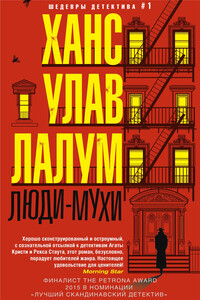
Убит бывший лидер норвежского Сопротивления и бывший член кабинета министров Харальд Олесен. Его тело обнаружено в запертой квартире, следов взлома нет, орудие убийства отсутствует. На звук выстрела к двери Олесена сбежались все соседи, но никого не увидели. Инспектор уголовного розыска Колбьёрн Кристиансен считает, что убийство, скорее всего, совершил кто-то из них. Более того, он полагает, что их показания лживы.
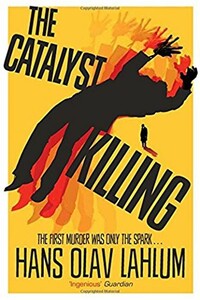
The third mystery in the hugely compelling, bestselling international crime series from Norway's answer to Agatha Christie, Hans Olav Lahlum, The Catalyst Killing will have you guessing to the final clue. The first murder was only the spark… 1970: Inspector Kolbjorn Kristiansen, known as K2, witnesses a young woman desperately trying to board a train only to have the doors close before her face. The next time he sees her, she is dead… As K2 investigates, with the help of his precocious young assistant Patricia, he discovers that the story behind Marie Morgenstierne's murder really began two years ago, when a group of politically active young people set out on a walking tour in the mountains.
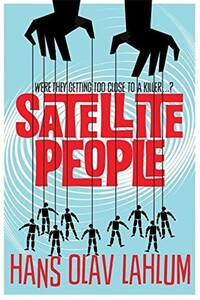
A gripping, evocative, and ingenious mystery which pays homage to Agatha Christie, Satellite People is the second Norwegian mystery in Hans Olav Lahlum's series. Oslo, 1969: When a wealthy man collapses and dies during a dinner party, Norwegian Police Inspector Kolbjorn Kristiansen, known as K2, is left shaken. For the victim, Magdalon Schelderup, a multimillionaire businessman and former resistance fighter, had contacted him only the day before, fearing for his life. It soon becomes clear that every one of Schelderup's 10 dinner guests is a suspect in the case.
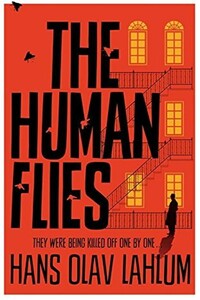
Oslo, 1968: ambitious young detective Inspector Kolbjorn Kristiansen is called to an apartment block, where a man has been found murdered. The victim, Harald Olesen, was a legendary hero of the Resistance during the Nazi occupation, and at first it is difficult to imagine who could have wanted him dead. But as Detective Inspector Kolbjorn Kristiansen (known as K2) begins to investigate, it seems clear that the murderer could only be one of Olesen's fellow tenants in the building. Soon, with the help of Patricia – a brilliant young woman confined to a wheelchair following a terrible accident – K2 will begin to untangle the web of lies surrounding Olesen's neighbors; each of whom, it seems, had their own reasons for wanting Olesen dead.
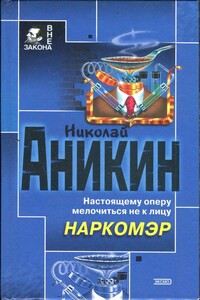
Тупик. Стена. Старый кирпич, обрывки паутины. А присмотреться — вроде следы вокруг. Может, отхожее место здесь, в глухом углу? Так нет, все чисто. Кто же сюда наведывается и зачем? И что охраняет тут охрана? Да вот эту стену и охраняет. Она, как выяснилось, с секретом: время от времени отъезжает в сторону. За ней цех. А в цеху производят под видом лекарства дурь. Полковник Кожемякин все это выведал. Но надо проникнуть внутрь и схватить за руку отравителей, наживающихся на здоровье собственного народа. А это будет потруднее…
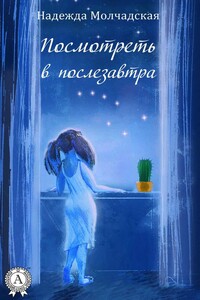
«Посмотреть в послезавтра» – остросюжетный роман-триллер Надежды Молчадской, главная изюминка которого – атмосфера таинственности и нарастающая интрига.Девушка по имени Венера впадает в кому при загадочных обстоятельствах. Спецслужбы переправляют ее из закрытого городка Нигдельск в Москву в спецклинику, где известный ученый пытается понять, что явилось причиной ее состояния. Его исследования приводят к неожиданным результатам: он обнаруживает, что их связывает тайна из его прошлого.
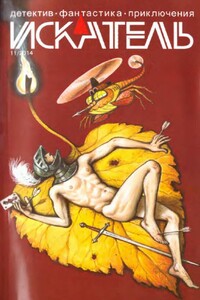
«ИСКАТЕЛЬ» — советский и российский литературный альманах. Издаётся с 1961 года. Публикует фантастические, приключенческие, детективные, военно-патриотические произведения, научно-популярные очерки и статьи. В 1961–1996 годах — литературное приложение к журналу «Вокруг света», с 1996 года — независимое издание.В 1961–1996 годах выходил шесть раз в год, в 1997–2002 годах — ежемесячно; с 2003 года выходит непериодически.Содержание:Анатолий Королев ПОЛИЦЕЙСКИЙ (повесть)Олег Быстров УКРАДИ МОЮ ЖИЗНЬ (окончание) (повесть)Владимир Лебедев ГОСТИ ИЗ НИОТКУДА.
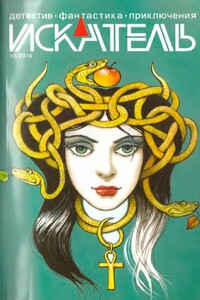
«ИСКАТЕЛЬ» — советский и российский литературный альманах. Издается с 1961 года. Публикует фантастические, приключенческие, детективные, военно-патриотические произведения, научно-популярные очерки и статьи. В 1961–1996 годах — литературное приложение к журналу «Вокруг света», с 1996 года — независимое издание.В 1961–1996 годах выходил шесть раз в год, в 1997–2002 годах — ежемесячно; с 2003 года выходит непериодически.Содержание:Олег Быстров УКРАДИ МОЮ ЖИЗНЬ (повесть);Петр Любестовский КЛЕТКА ДЛЯ НУТРИИ (повесть)
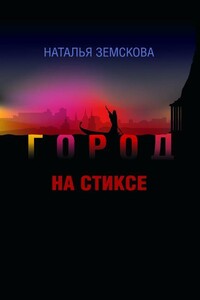
Наталья Земскова — журналист, театральный критик. В 2010 г. в издательстве «Астрель» (Санкт-Петербург) вышел её роман «Детородный возраст», который выдержал несколько переизданий. Остросюжетный роман «Город на Стиксе» — вторая книга писательницы. Молодая героиня, мечтает выйти замуж и уехать из забитого новостройками областного центра. Но вот у неё на глазах оживают тайны и легенды большого губернского города в центре России, судьбы талантливых людей, живущих рядом с нею. Роман «Город на Стиксе» — о выборе художника — провинция или столица? О том, чем рано или поздно приходится расплачиваться современному человеку, не верящему ни в Бога, ни в черта, а только в свой дар — за каждый неверный шаг.
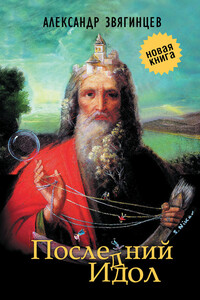
В сборник «Последний идол» вошли произведения Александра Звягинцева разных лет и разных жанров. Они объединены общей темой исторической памяти и личной ответственности человека в схватке со злом, которое порой предстает в самых неожиданных обличиях. Публикуются рассказы из циклов о делах следователей Багринцева и Северина, прокуроров Ольгина и Шип — уже известных читателям по сборнику Звягинцева «Кто-то из вас должен умереть!» (2012). Впервые увидит свет пьеса «Последний идол», а также цикл очерков писателя о событиях вокруг значительных фигур общественной и политической жизни России XIX–XX веков — от Петра Столыпина до Солженицына, от Александра Керенского до Льва Шейнина.